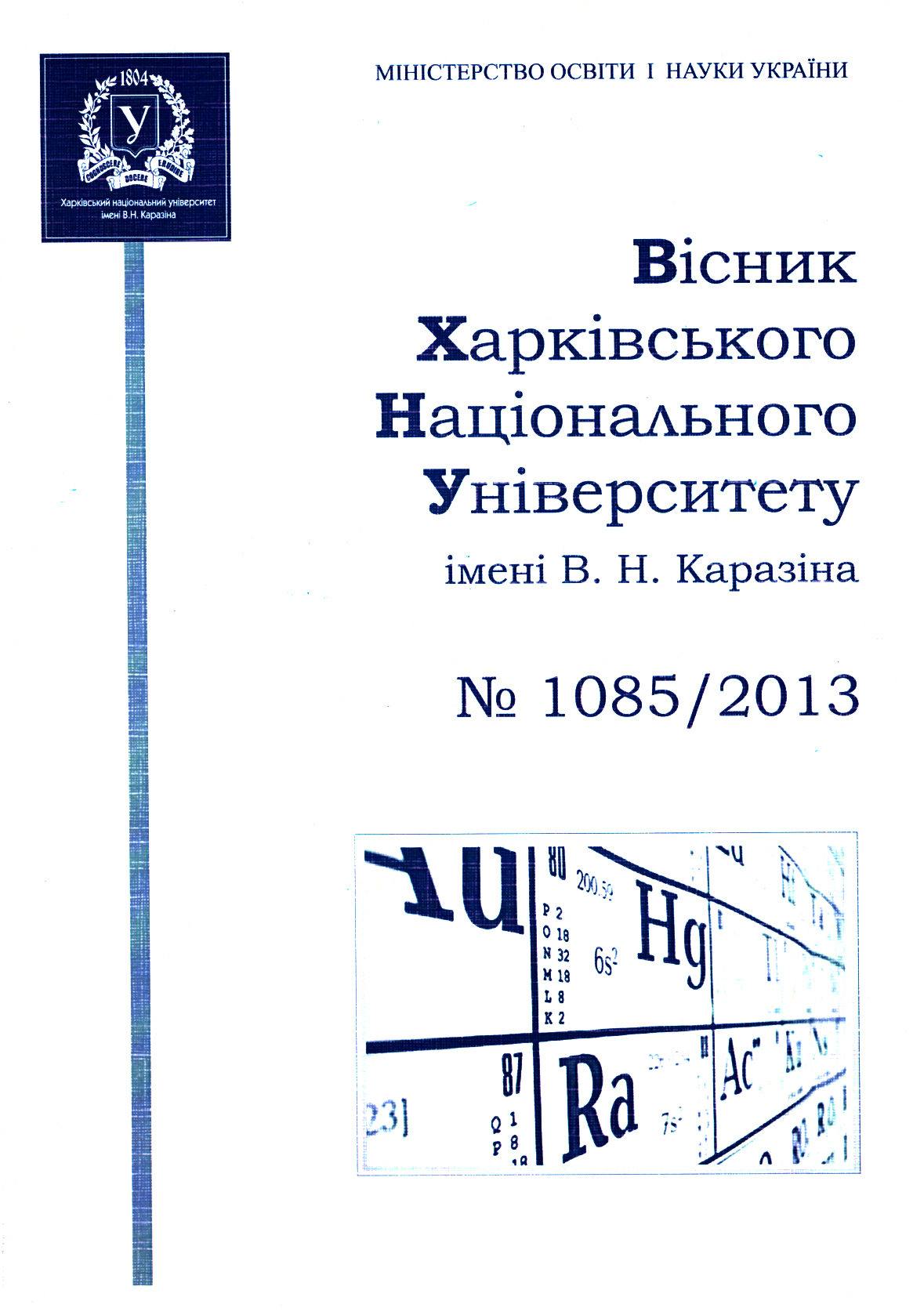Inducing radicaloid structures by extremal fields. Using simple nonempirical and semiempirical approaches
Abstract
The effects of strong electrostatic fields on the molecular electronic structure are studied for small molecules and large π-conjugated systems. The full and restricted configuration interaction schemes, along with the spin-extended Hartree-Fock method, are used. For characterizing unpaired electrons we employ the hole-particle index Neff by the author et al, J. Chem. Phys. 124, 224109 (2006), that is closely related to the Head-Gordon approach in Chem. Phys. Lett. 380, 488 (2003).
It is shown that for such small systems as ВеО и Li4 it is possible to induce the biradicaloid structures by using fields of the order of 0.1 a.u. The electric fields less by one order of magnitude (0.01 a.u.) are sufficient in order to produce similar radicaloid states in sufficiently large π-shells (e.g., in hexaphenylene). Some debatable issues (particularly, a failure to take account of geometry relaxation in the field) are discussed.
Downloads
References
A. D. Bandrauk, Molecules in Laser Fields (Marcel Dekker. New York. 1994).
P. Schmelcher, W. Schweizer, Atoms and Molecules in Strong External Fields (Springer. Ber-lin. 2002).
F. Grossmann, Theoretical Femtosecond Physics: Atoms and Molecules in Strong Laser Fields (Springer. Berlin, Heidelberg. 2008).
A. V. Luzanov, J. Struct. Chem. 54,. 277 ( 2013).
Luzanov A. B., Zh. strukt. khimii. 54, 799 (2013).
P.W. Fowler, E. Stainer, Chem. Phys. Lett. 364, 259 (2002).
I. Mayer, Adv. Quant. Chem. 12, 189 (1980).
M. M. Mestechkin, G. E. Vayman, V. Klimo, Y. Tin'o, Rasshirenny'y metod Hartri-Foka i ego primenenie k molekulam (Naukova dumka. Kiev. 1983).
A. V. Luzanov, Fiz. molekul. 10, 65 (1981); A. V. Luzanov, V. V. Ivanov, Theor. Exp. Chem. 26, 363 (1990).
M. Head-Gordon, Chem. Phys. Lett. 380, 488 (2003).
A. V. Luzanov, O. A. Zhikol, Int. J. Quantum Chem. 104, 167 (2005).
A. V. Luzanov, Yu. F. Pedash, S. Mokhamad, Theor. Exp. Chem. 26, 513 (1990).
W. Kutzelnigg, V. H. Smith. Int. J. Quantum Chem. 2, 531 (1968).
A. V. Luzanov, O. V. Prezhdo, J. Chem. Phys. 124, 224109 (2006).
D. Döhnert, and J. Koutecký, J. Chem. Phys. 69, 1168 (1978).
A. V. Luzanov, Theor. Exp. Chem. 25, 1 (1989); A. B. Luzanov, Yu. F. Pedash, V. V. Ivanov, J. Struct. Chem. 30, 701 (1989); A. V. Luzanov, A. L. Wulfov, O. V. Krouglov, Chem. Phys. Lett. 197, 614 (1992).
A. V. Luzanov, O. V. Prezhdo, Mol. Phys. 105, 2879 (2007).
K. P.Huber, G. Herzberg, Molecular Spectra and Molecular Structure, Vol IV (Van Nostrand Reinhold. New York. 1979).
Wolfram Research, Inc., Mathematica, Version 5.2, Champaign, IL, 2005.
T. Sugimoto and Z.-i. Yoshida, Pure & Appl. Chem. 62, 551 (1990).
K. Müllen Chem. Rev. 101, 1267 (2001).
W. Pisula, X. Feng, K. Müllen, Chem. Mater. 23, 554 (2011).
M. Bieri, M. Treier, J. Cai et al, Chem. Commun. 2009, 6919; M. Hatanaka, Chem. Phys. Lett. 488, 187 (2010).
A. Saenz, Phys. Rev. A 66, 063407 (2002).
I. G. Kaplan, I. J. Quantum Chem. 107, 2595 (2007); I. G. Kaplan, J. Mol. Struct. 838, 39 (2007).
A. V. Luzanov, Int. J. Quantum Chem. . 113, 2489 (2013).
W. Mizukami, Y. Kurashige, T. Yanai, J. Chem. Theor. Comp. 9, 401 (2012).
F. Plasser, H. Pašalic, M.H. Gerzabek et al, Angew. Chem. Int. Ed. 52, 2581 (2013).
X. Feng, A. V. Luzanov, A. I. Krylov, J. Phys. Chem. Lett. 4, 3845 (2013).
A. V. Luzanov, Jurn. struktur. himii. 55, № 5 (2014).




